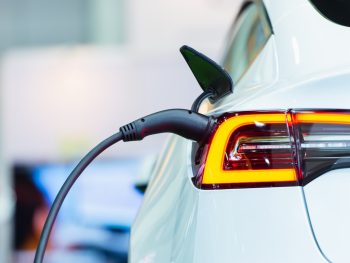More than one in five cars sold globally this year expected to be electric
The International Energy Agency (IEA) has published a bullish report on the outlook for global electric vehicle demand in the near- and long-term.
The new edition of its annual Global EV Outlook says more than one in five cars sold worldwide this year is expected to be electric, with surging demand projected over the next decade set to remake the global auto industry and significantly reduce oil consumption for road transport.
It’s predicting that global electric car sales will reach around 17 million by the end of the year. In the first quarter, sales grew by about 25% compared with the same period in 2023 – similar to the growth rate seen in the same period a year earlier, but from a larger base. The number of electric cars sold globally in the first three months of this year is roughly equivalent to the number sold in all of 2020.
In 2024, electric cars sales in China are projected to leap to about 10 million, accounting for about 45% of all car sales in the country. In the United States, roughly one in nine cars sold are projected to be electric – while in Europe, despite a generally weak outlook for passenger car sales and the phase-out of subsidies in some countries, electric cars are still set to represent about one in four cars sold.
This growth builds on a record-breaking 2023. Last year, global electric car sales soared by 35% to almost 14 million. While demand remained largely concentrated in China, Europe and the United States, growth also picked up in some emerging markets such as Viet Nam and Thailand, where electric cars accounted for 15% and 10%, respectively, of all cars sold.
And despite near-term challenges in some markets, based on today’s policy settings, almost one in three cars on the roads in China by 2030 is set to be electric, and almost one in five in both United States and European Union.
The report also reckons that under today’s policy settings, every other car sold globally is set to be electric by 2035. Meanwhile, if countries’ announced energy and climate pledges are met in full and on time, two in three cars sold would be electric by 2035.
The report finds that manufacturers have taken major steps to deliver on the strengthening EV ambitions of governments, including by making significant financial commitments. It says that thanks to high levels of investment over the past five years, the world’s capacity to produce batteries for EVs is well positioned to keep up with demand, even as it rises sharply over the next decade. The pace of the transition to EVs may not be consistent and will hinge on affordability, the report emphasises.
In China, more than 60% of electric cars sold in 2023 were already less expensive to buy than their conventional equivalents. However, in Europe and the United States, the purchase prices for cars with internal combustion engines remained cheaper on average, though intensifying market competition and improving battery technologies are expected to reduce prices in the coming years. Even where upfront prices are high, the lower operating costs of EVs mean the initial investment pays back over time.
Growing electric car exports from Chinese automakers, which accounted for more than half of all electric car sales in 2023, could add to downward pressure on purchase prices. Chinese companies, which are also setting up production facilities abroad, have already seen strong sales of more affordable models launched in 2022 and 2023 in overseas markets. This highlights that the composition of the main EV-producing economies is diverging considerably from the traditional auto industry.
Ensuring that the availability of public charging keeps pace with electric vehicle sales is crucial for continued growth, according to the report. The number of public charging points installed globally was up 40% in 2023 relative to 2022, and growth for fast chargers outpaced that of slower ones. However, to meet a level of electric vehicle deployment in line with the pledges made by governments, charging networks need to grow sixfold by 2035. At the same time, policy support and careful planning are essential to make sure greater demand for electricity from charging does not overstretch electricity grids.
Global electric vehicle demandThe International Energy Agency (IEA)


